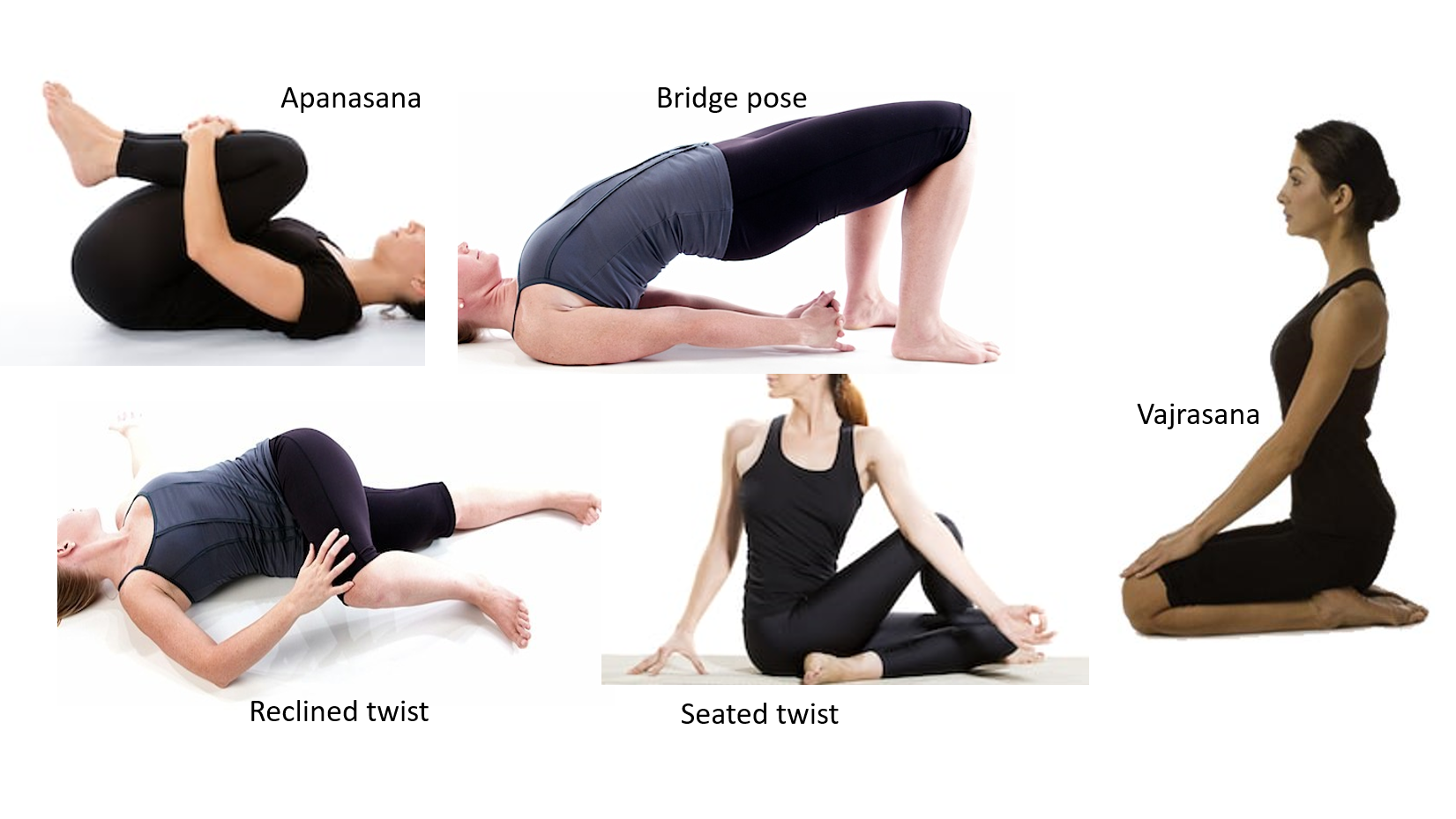Gas and bloating are common digestive complaints, that produce abdominal discomfort and pain. Gas comes from either swallowed air or by the breakdown of foods by gut bacteria (like Clostridium and Bacteroides). Here are 3 points of care which can help reduce gas and bloating-
1. FOODS TO AVOID AND RESTRICT:
- Vegetables- cabbage, broccoli, cauliflower, asparagus, cucumber, green beans, onions, garlic, carrots, radishes and potatoes
- Cereals- oats, corn, barley, and puffy wheat
- Legumes – lentils, beans, and peas (pre-soaking before cooking can reduce gas formation)
- Fruits- apples, pears, peaches, bananas, apricots
- Prunes and raisins
- Carbonated and sugary drinks
- Milk and cheese
- Packaged/fast food
- Mushrooms
- Beer and wine
- Artificial sweeteners like sorbitol and xylitol (often seen in sugar-free candies)
Include more yogurt, ginger, ladies finger, capsicum, tomatoes, olives, avocado, papaya, berries, citrus fruits (like lemon, oranges), pineapple and kiwi, in good measures in your diet as they reduce gas formation. Eggs, meat, poultry, and fish also produce less gas as compared to many other foods.
- EATING HABITS:
- Do not eat too fast or have hurried meals. Give at least 15-20 minutes to eat your main meals.
- Eat at regular times and do not unduly delay meals.
- Chew your food thoroughly before swallowing, and do not gulp down either solid or liquid food items.
- Avoid water intake during the meal, and if needed take a few sips or drink a glass slowly.
- Avoid too much talking during meals.
- Avoid very heavy meals. Eat a light snack in between meals like fruits, almonds, walnuts, protein crackers, or herbal tea.
- Eat freshly prepared food as much as possible. Old/stale food can cause more gas and indigestion.
- Avoid lying down or sleeping immediately after meals. Allow a gap of at least 1 hour.
- PHYSICAL EXERCISE: Daily at least half to 1 hour of physical exercise like brisk walking, cycling, jogging, swimming, aerobics or yoga is recommended. Do not exercise for at least 2 hours after a meal. Certain yoga exercises like Apanasana, Reclined/Seated twist, and Bridge pose, are especially useful to eliminate gas and reduce bloating. Sitting in Vajrasana for a few minutes post-meal helps in improving digestion.

Long term gas and bloating issues, should be evaluated for gluten and/or lactose intolerance. It is good to keep a food diary to correlate symptoms with specific dietary items. Gluten-free bread and rice products are available.
The presence of constipation can also aggravate gas formation. Conditions called Irritable Bowel Syndrome (IBS) and Small Intestinal Bacterial Overgrowth (SIBO) can also cause an increase in gas production and bloating.
If one is taking any medicines, it is important to evaluate the same for gas formation, bowel disturbance, or constipation.
Further reading-

